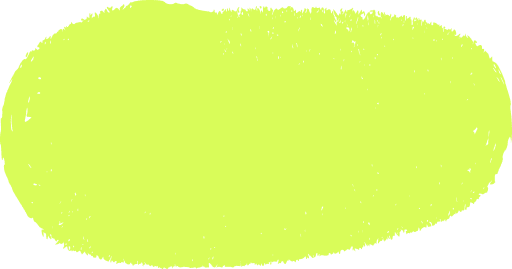🌍 All
About us
Digitalization
News
Startups
Development
Design
How to Run a UX Workshop: A Comprehensive Guide
Marek Pałys
Oct 18, 2022・5 min read
Table of Content
1. Understanding the Importance of a UX Workshop
2. Types of UX Workshops
3. Preparing for the Workshop
4. Essential UX Workshop Activities
5. Facilitating the Workshop
6. Post-Workshop Activities
7. Tools for a Successful UX Workshop
8. Challenges in UX Workshops and How to Overcome Them
9. Conclusion
FAQs:
If you're looking to drive innovation, foster team collaboration, and put user needs at the forefront, then conducting a UX workshop is pivotal. This detailed guide will walk you through the process of running a successful UX workshop, ensuring that by the end, you and your participants are on the same page.
1. Understanding the Importance of a UX Workshop
A UX workshop focuses on the user's journey, gathering insights to improve the overall design process. It is a crucial part of the UX design process where diverse perspectives come together, bridging the gap between end user's needs and the final product.
2. Types of UX Workshops
Depending on the project goals, you might conduct different types of UX workshops:
Discovery workshops: Here, you start with raw ideas, exploring potential solutions.
Empathy workshops: A deep dive into the user's shoes to understand their pain points and needs.
Design workshops: These are more hands-on, focusing on idea generation and potential design solutions.
Critique workshops: Where existing ideas are discussed, refined, or discarded.
3. Preparing for the Workshop
Any good UX workshop begins with thorough preparation:
Setting the Workshop Goal: Knowing the workshop goal ensures everyone is on the same page.
Creating a Workshop Agenda: This outlines the flow of the workshop, ensuring there's structure.
Gathering the Right Workshop Participants: Ensure you have a diverse group, including UX designers, product designers, and other stakeholders.
4. Essential UX Workshop Activities
Here's a list of activities to foster creative thinking and idea generation:
User Persona Creation: Develop fictional characters based on user research to understand the target audience.
User Journey Mapping: This visualizes the user's interaction with a product or service.
Affinity Diagramming: A collaborative activity where post it notes containing ideas, user insights, and pain points are grouped by themes.
Dot Voting: Helps prioritize ideas by allowing workshop participants to vote on them.
Empathy Maps: A tool that dives deeper into the user's emotions, helping UX designers work closely with their needs.
5. Facilitating the Workshop
Workshop facilitation is an art. Encourage participants to share diverse perspectives, ensuring every voice is heard. Ground rules can be set to guide group discussions and maintain a positive environment.
6. Post-Workshop Activities
After the ideation part of the workshop, it's essential to:
Gather Feedback: This helps refine future workshops and understand what went well or what could be improved.
Document Everything: Capture user stories, design solutions, and initial ideas for future reference.
7. Tools for a Successful UX Workshop
Utilizing tools can enhance the workshop experience:
Post It Notes: For capturing ideas and feedback.
Whiteboards: For sketching out user flows and design solutions.
Digital Platforms for Remote Workshops: Tools like Miro or Mural can be used when participants are not in the same physical location.
8. Challenges in UX Workshops and How to Overcome Them
Every UX workshop can face challenges:
Too Many Divergent Ideas: Use techniques like dot voting or group discussions to converge.
Dominating Participants: Set ground rules and as a facilitator, ensure everyone has a chance to speak.
9. Conclusion
A well-conducted UX workshop can bring invaluable contributions to the design process, ensuring the end product meets the end user's needs. Whether it's a discovery workshop, an empathy workshop, or any other type, the key is to foster mutual understanding, generate new ideas, and work towards a shared goal. Remember, it's not just about the UX designer or the workshop participants; it's about ensuring the final product resonates with the user.
FAQs:
- What is a UX workshop?
A UX workshop is a collaborative event where diverse participants focus on improving the user experience through various activities, discussions, and brainstorming sessions. - Why are UX workshops important?
They foster collaboration, bring diverse perspectives together, and place user needs at the forefront of the design process. - What are some types of UX workshops?
Key types include discovery, empathy, design, and critique workshops. - How do I prepare for a UX workshop?
Set a clear workshop goal, create an agenda, and gather the right participants to ensure diverse perspectives. - What are UX workshop activities?
Activities range from user persona creation and user journey mapping to affinity diagramming and dot voting. - How can I facilitate a UX workshop effectively?
Encourage diverse perspectives, set ground rules, guide group discussions, and maintain a positive environment. - What tools are used in a UX workshop?
Common tools include post-it notes, whiteboards, and digital platforms for remote workshops like Miro or Mural. - What challenges might I face during a UX workshop?
Challenges can include divergent ideas, dominating participants, or lack of engagement. - How do I gather feedback post-workshop?
Use surveys, feedback forms, or group discussions to understand the strengths and areas of improvement for your workshop. - Why is documenting a workshop important?
It captures key insights, design solutions, and ideas for future reference and ensures alignment among participants. - What is the role of a UX designer in a workshop?
A UX designer guides the workshop, ensures user-focused discussions, and translates findings into design solutions. - How do remote workshops differ from in-person ones?
Remote workshops use digital tools for collaboration and require clear communication, while in-person ones benefit from face-to-face interaction. - What is empathy mapping in a UX workshop?
It’s a tool to understand the user's emotions, challenges, and needs, helping designers to craft user-centric solutions. - How do I prioritize ideas generated in the workshop?
Techniques like dot voting and group discussions help in converging and prioritizing ideas. - Can non-designers participate in a UX workshop?
Absolutely! Non-designers, like product managers and stakeholders, bring unique perspectives that can enrich the workshop. - How long should a UX workshop last?
The duration can vary, but typically it ranges from a few hours to a full day, depending on the workshop’s goals. - What is the outcome of a successful UX workshop?
The outcome should be a set of actionable insights, design solutions, and a clear direction aligned with user needs. - How often should a company conduct UX workshops?
It depends on the project. For ongoing projects, regular workshops can provide continuous insights and ensure alignment with user needs. - What's the difference between a discovery workshop and an empathy workshop?
A discovery workshop explores potential solutions and ideas, while an empathy workshop focuses on understanding user emotions and needs. - Why are diverse groups important in a UX workshop?
Diverse groups bring multiple perspectives, ensuring a holistic understanding of user needs and fostering innovative solutions.

 Don't miss a beat - subscribe to our newsletter
Don't miss a beat - subscribe to our newsletterYou may also  like...
like...

The Importance of UX Research: Boosting Your Digital Product's Success
Learn how UX research transforms digital products into user-friendly, market-leading experiences.
Alexander Stasiak
Mar 03, 2025・11 min read

Crafting Seamless Experiences: The Impact of UX Design on Scalable SaaS Applications
UX design is the backbone of scalable SaaS. See how intuitive design boosts growth, retention, and user satisfaction.
Alexander Stasiak
May 05, 2025・14 min read

Finding the Sweet Spot: Balancing User Experience and Minimum Viable Product in Lean Startups
Lean startups must balance UX and MVP to achieve market success. This guide explores strategies for aligning user satisfaction with efficient product development.
Alexander Stasiak
Dec 03, 2024・12 min read




